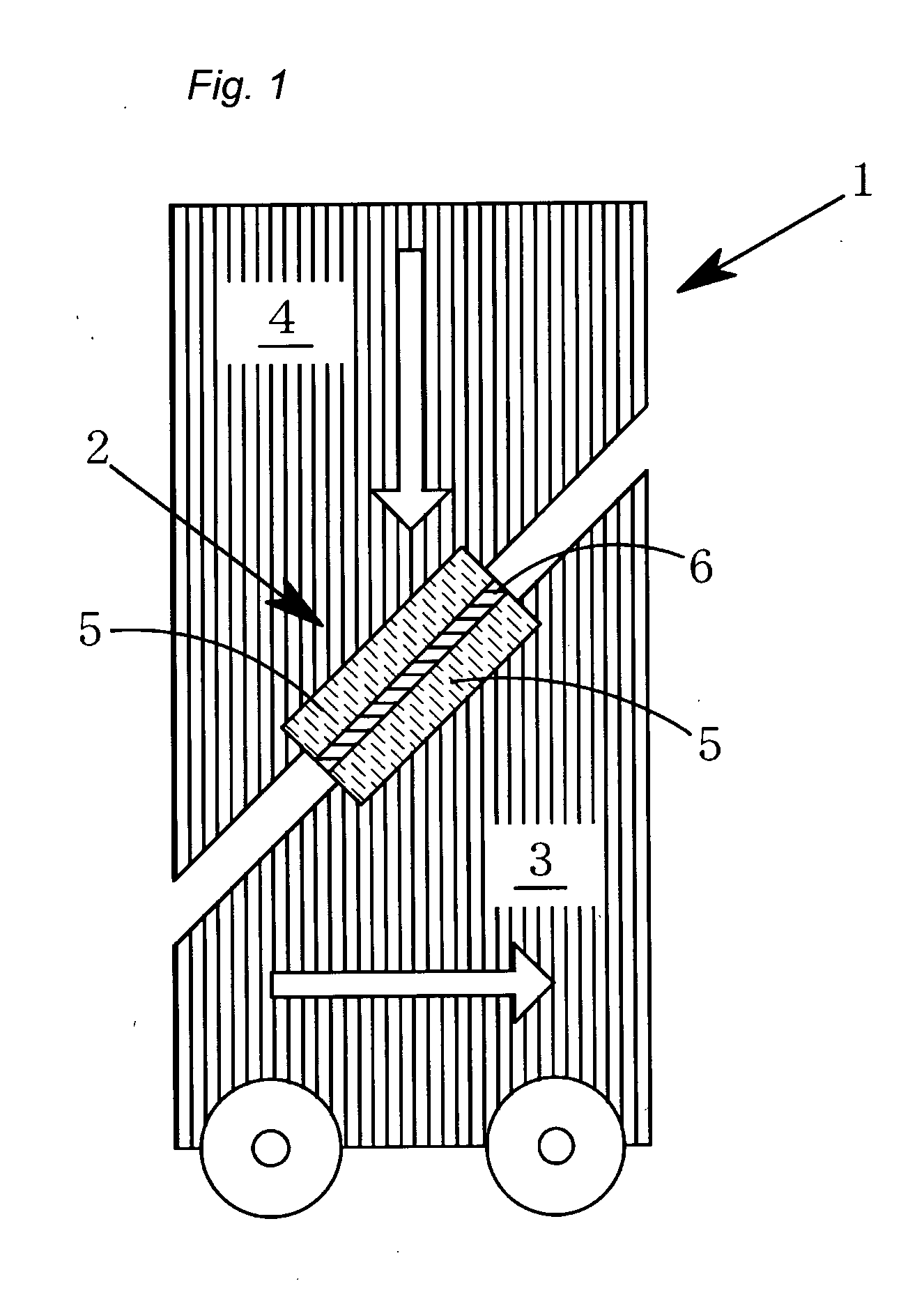Interlayer film for laminated glass, method for manufacturing the same, and laminated glass containing the same
a technology of laminated glass and interlayer film, which is applied in the direction of layered products, transportation and packaging, chemistry apparatus and processes, etc., to achieve excellent heat-shielding properties, excellent transparency, durability and electromagnetic wave permeability, and good adhesiveness with glass
- Summary
- Abstract
- Description
- Claims
- Application Information
AI Technical Summary
Benefits of technology
Problems solved by technology
Method used
Image
Examples
example 1
Preparation of Dispersion
[0078]A dispersion (d1) was obtained by subjecting a 60 wt % methanol dispersion of anhydrous zinc antimonate (B) having a ZnO / Sb2O5 molar ratio of from 0.8 to 1.2 (“CX-Z693M-F” produced by Nissan Chemical Industries, Ltd.) to pulverization treatment with a bead mill. A dispersion (d2) was obtained by adding 7.2 g of an ethanol solution containing 10% by weight of a polyvinyl butyral (A1) (viscosity average degree of polymerization of starting polyvinyl alcohol=1000, degree of acetalization=70 mol %) dissolved, to 0.6 g of the dispersion (d1) under stirring. Moreover, by adding 15.2 g of triethylene glycol-di-2-ethylhexanoate (in the following, abbreviated as 3G8) as a plasticizer (C) while stirring the dispersion (d2), a dispersion (d3) was obtained in which the anhydrous zinc antimonate (B) was dispersed and the polyvinyl butyral (A1) and the plasticizer (C) were dissolved.
[Manufacture of Interlayer Film for Laminated Glass]
[0079]The dispersion (d3) prepar...
example 2
[0082]A sample was produced in the same manner as in Example 1, except for adding a polyvinyl butyral (A1) (viscosity average degree of polymerization of starting polyvinyl alcohol=1700, degree of acetalization=72 mol %) instead of the polyvinyl butyral (A1) added in the preparation of the dispersion (d2). The sample manufacture conditions are shown in Table 1. The obtained interlayer film for laminated glass and the obtained laminated glass were evaluated for their performance and the results are shown in Table 2.
example 3
[0083]A sample was produced in the same manner as in Example 1, except for changing the concentration of the polyvinyl butyral (A1) of the ethanol solution added in the preparation of the dispersion (d2) to 5% by weight, and adding 14.4 g of the ethanol solution. The sample manufacture conditions are shown in Table 1. The obtained interlayer film for laminated glass and the obtained laminated glass were evaluated for their performance and the results are shown in Table 2.
PUM
| Property | Measurement | Unit |
|---|---|---|
| particle diameter | aaaaa | aaaaa |
| molar ratio | aaaaa | aaaaa |
| particle diameter | aaaaa | aaaaa |
Abstract
Description
Claims
Application Information
 Login to View More
Login to View More - R&D
- Intellectual Property
- Life Sciences
- Materials
- Tech Scout
- Unparalleled Data Quality
- Higher Quality Content
- 60% Fewer Hallucinations
Browse by: Latest US Patents, China's latest patents, Technical Efficacy Thesaurus, Application Domain, Technology Topic, Popular Technical Reports.
© 2025 PatSnap. All rights reserved.Legal|Privacy policy|Modern Slavery Act Transparency Statement|Sitemap|About US| Contact US: help@patsnap.com


